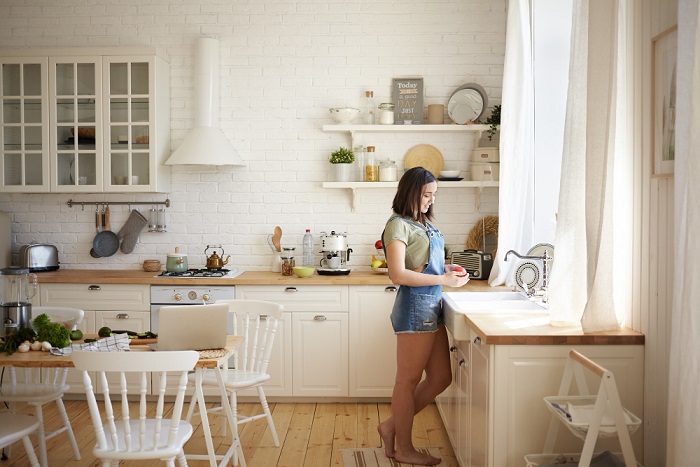Welcome to the world of kitchen design, where creativity and functionality blend seamlessly to craft your dream kitchen. In this article, we’ll explore invaluable insights and expert tips from a seasoned kitchen designer, guiding you through the process of transforming your kitchen into a space that marries aesthetics and practicality. Whether you’re renovating your current kitchen or starting from scratch, these expert tips will help you create a culinary haven tailored to your preferences and lifestyle.
The Role of a Kitchen Designer
A kitchen designer perth is an experienced professional who understands the art of combining form and function in kitchen spaces. They take into account your preferences, lifestyle, and available space to create a design that maximizes efficiency and enhances the overall appeal of your kitchen.
Assessing Your Needs and Wants
A crucial starting point in designing your dream kitchen is to assess your needs and wants. Think about your daily routines, cooking habits, and how you envision using the kitchen space. Ask yourself:
- What appliances do I need and use regularly?
- How much storage space is necessary?
- Is a kitchen island or breakfast bar desired?
- What type of lighting would complement the space?
- What style and color scheme do I prefer?
By answering these questions, you’ll gain clarity on what you truly need and want in your dream kitchen.
Determining the Layout
The layout of your kitchen plays a significant role in its functionality and flow. There are various kitchen layouts to consider, such as:
- Galley Kitchen: Ideal for compact spaces, this layout features parallel countertops with a corridor-like design.
- L-Shaped Kitchen: Utilizes two adjacent walls to form an L-shape, providing ample counter space and potential for a kitchen island.
- U-Shaped Kitchen: Provides three walls of workspace, maximizing storage and offering an efficient work triangle.
- Island Kitchen: Incorporates an island in the center, adding extra prep space, storage, and a casual dining area.
- Open Concept Kitchen: Seamlessly integrates the kitchen with a living or dining area, creating an open and airy atmosphere.
Choosing the right layout will depend on the size of your kitchen, the available space, and your cooking habits.
Embracing Functional Storage Solutions
An organized kitchen is essential for smooth cooking and a clutter-free environment. Embrace functional storage solutions, such as:
- Cabinet Organizers: Utilize pull-out shelves, lazy susans, and dividers to maximize cabinet space and keep items easily accessible.
- Drawer Inserts: Opt for custom drawer inserts to organize utensils, cutlery, and other kitchen essentials neatly.
- Pantry Systems: Install a well-organized pantry with adjustable shelves and baskets to store dry goods efficiently.
- Wall-Mounted Racks: Save countertop space by installing wall-mounted racks for pots, pans, and kitchen tools.
Selecting High-Quality Appliances
Investing in high-quality appliances is crucial for the long-term functionality and efficiency of your dream kitchen. Prioritize energy-efficient appliances that align with your cooking needs. Consider:
- Refrigerator: Choose a refrigerator size and style that suits your family’s needs and complements the kitchen design.
- Cooktop and Oven: Select a cooktop and oven with advanced features that cater to your culinary endeavors.
- Dishwasher: Opt for a dishwasher with different wash cycles and capacities to handle your daily cleaning requirements.
- Microwave: Find a microwave that fits seamlessly into your kitchen design and offers convenience.
Integrating Aesthetic Elements
Your dream kitchen should reflect your unique style and personality. Consider these aesthetic elements:
- Color Palette: Choose a color scheme that resonates with your taste, creating a harmonious atmosphere.
- Backsplash and Countertops: Select materials and patterns that add visual interest and complement the overall design.
- Lighting Fixtures: Install layered lighting, including ambient, task, and accent lighting, to create a warm and inviting ambiance.
- Furniture and Decor: Integrate furniture and decor pieces that enhance the overall aesthetics of the kitchen.
Conclusion
Designing your dream kitchen is an exhilarating journey that demands a thoughtful approach to combine aesthetics and functionality. By assessing your needs, determining the layout, embracing smart storage solutions, selecting high-quality appliances, and integrating your personal style, you can create a kitchen that not only inspires your culinary endeavors but also becomes the heart of your home. Remember, hiring a professional kitchen designer can significantly enhance the process, ensuring you achieve the kitchen of your dreams.






